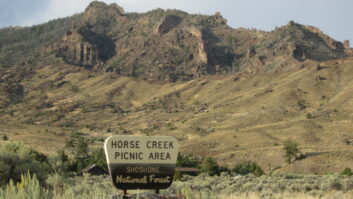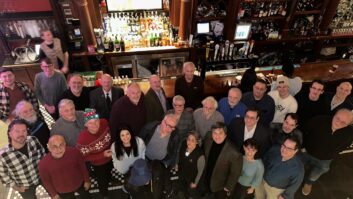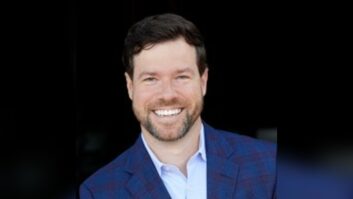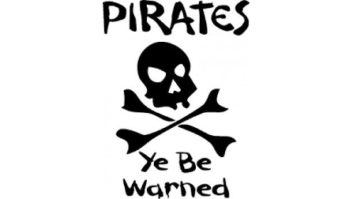You�ve probably heard of Culver City, Calif., but likely couldn�t place it on a map. It�s another media suburb in the greater Los Angeles area.

Origination point for the 400-station NBC sports network. In the back of the room, the producer�s workspace; in front, the board operator position.
Credit: McCormick Construction�
That it isn�t well known belies its importance in the country�s media and broadcast landscape, since it�s home to some rather large broadcast institutions (old and new), including Westwood One�s West Coast facility, the subject of our Facility Showcase this month.
The building was built in the 1920s, according to Cumulus Broadcasting Regional Director of Engineering for the Southwest/West Anthony Vitiello, whose office is located there. It originally served as a Ford and Maserati dealership.
�In the rafters, there�s still a Maserati logo up there,� said Vitiello. Brick walls and bow truss roofs were a typical construction style in the early part of the 20th century.
Westwood One bought the three buildings (one of which housed sales and admin personnel, including promotions) in 1990, and they became the headquarters for the national network. In 2003, Westwood One used McCormick Construction of Burbank, Calif., to build out the space. Studios for Metro Traffic were constructed � 28 independent studios for traffic reporters, along with three offices. The master control room was expanded to its current size, as well.

Lobby waiting areas for guests. The NBC Sports network producer work space can also be seen through the window.
Credit: McCormick Construction�
Metro Traffic was sold and moved out in 2012, and afterward Westwood One ran a split operation between two buildings: One is the current building, and the other is across the street where KABC and KLOS now reside. Once the sale of the land on La Cienega occurred (the former home of the KABC(AM) transmitter, as well as both the KABC and KLOS studios and office) arrangements were made to relocate KABC and KLOS into the Westwood One buildings in Culver City. This is what prompted the latest studio buildout.
As part of the process, the interior of the building was remodeled, and during construction, the staff of Westwood One squeezed into the building across the street, while McCormick Construction had unobstructed reign to build the studios.
Eight studios were built-out during the 2016 remodel: Studio A, for Zach Sang; Studios B&C, which are multipurpose; Studios D&E for the NBC Sports network; studio K, for the �The Big Time with Whitney Allen;� and Studio L, for production. Other studios in the facility were pre-existing from the split building operation.
Staff moved into the newly renovated facility in August of 2016.

The Zach Sang studio in Culver City. Custom furniture designed by Omnirax.
Credit: McCormick Construction�
STUDIO LINEUPS
Sierra Automated Systems consoles and a three-frame 32KD router (supporting 1,536 inputs and outputs) make up the heart of the Westwood One west coast facility. On-air playback and automation is based on the ENCO system. All studio PCs, whether for general purposes or ENCO, are connected to the rack rooms via KVM extenders.
Furniture, next to consoles and routers, represents the greatest capital expense in a project like this, and so I asked David Holland of furniture maker Omnirax about their role in the project. He said collaboration with Vitiello was key to the success of the furniture designs.
�Most of the studios were fairly straightforward, derived and improving on designs we�d worked out a decade ago on our initial build [across the street]. One studio however, provided some unique challenges: Westwood had decided to move Zach Sang, their young phenom, from New York to California and to create a studio space that accommodated his �gang� and the unique fresh vibe of his show,� said Holland.

NBC Sports radio personnel busy producing a show for the 400-affiliate network.
Credit: McCormick Construction�
�We had a big space to work with and wanted to create furniture that was at once intimate, video friendly and able to handle lots of technology,� he continued. �We chose to design within our �Shapes� line, employing curved bent laminations to create a three-sided stage set with Zach on one wing and his engineer running a 32-Channel SAS Rubicon on the other. In between them are two positions for gang members, with guests positioned opposite the set on a couch placed on a raised platform. We embedded Zach�s video monitors into the furniture, and built up an aluminum shroud to conceal the consoles, controllers and keyboards. To dress things up and add eye candy for the cameras, we placed video monitors on each of the three elements with light boxes behind them powered by an Acclaim computer controlled lighting system.�
Omnirax paid special attention to wire routing throughout the long runs, all concealed within a double wall design behind the light boxes. The set furniture was so large that its installation was deferred until a large set of double doors was installed for the studio at the entrance of the building.
UPLINK CONNECTIVITY
A tall bank of AoIP codecs occupies one entire rack in the Westwood One TOC.

The three-frame 32KD router makes up the heart of the SAS system at Westwood One�s Culver City facility.
Credit: McCormick Construction�
�Telos Z/IP Ones are how we get our broadcasts to Denver, which is the uplink center,� said Vitiello. �We use the Z/IP as the primary and GatesAir�s Intraplex Net Express as a backup.�
The Net Express frames make use of IP as well, unlike the T1 systems that are still common across the US.
�Everything we do here is IP now,� said Vitiello.
The two systems use different internet connectivity as part of their main/backup functionality: The primary backhauls to the uplink in Denver are on a private MPLS. The GatesAir NetXpress frames are on a network from a different provider. Tertiary backups are done via ISDN.
Westwood One makes use of Comrex rackmount Access units, as well.
�Ethan Bearman [of Cumulus� KGO radio] does a show between here and San Francisco through one of the Accesses,� Vitiello said. �Some of our NBC Sports shows will come through on Access, and we�re planning to get more in the near future.�
The Maserati logo is still there, but Westwood One has already left its own indelible mark on this building.











